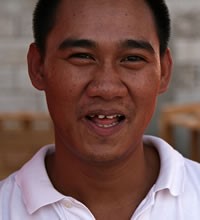Filipino, Tagalog in United Arab Emirates

Photo Source:
MySabah.com
Used with permission
|
Send Joshua Project a map of this people group.
|
| People Name: | Filipino, Tagalog |
| Country: | United Arab Emirates |
| 10/40 Window: | Yes |
| Population: | 348,000 |
| World Population: | 40,071,700 |
| Primary Language: | Tagalog |
| Primary Religion: | Christianity |
| Christian Adherents: | 90.00 % |
| Evangelicals: | 12.00 % |
| Scripture: | Complete Bible |
| Ministry Resources: | Yes |
| Jesus Film: | Yes |
| Audio Recordings: | Yes |
| People Cluster: | Filipino, Central |
| Affinity Bloc: | Malay Peoples |
| Progress Level: |
|
Introduction / History
Tagalog is the largest ethnic/language group residing in the Philippines, especially in the southern part of Luzon and nearby islands. The regions of Calabarzon and Mimaropa have the greatest concentrations.
They are one of the ancient dwellers of the Philippines. Tagalog culture developed in Taal, Batangas (the heartland of the Tagalog culture). The traditions of this people were passed orally. They developed a trading link with neighboring countries such as China, Japan, etc. Tagalogs have a writing system called baybayin. It uses diacritics to determine its pronunciation (similar to the Devanagari script of India).
During the Spanish colonization of the Philippines, the Tagalog homeland (especially Manila) became the center of colonial activity. During their rapid Christianization, the culture of these people dramatically changed from Asian to Hispanic (a combination of the two).
They eventually revolted against the Spanish colonizers. Along with other ethnic groups, Tagalogs fought against the invading Americans and later, the Japanese.
After gaining their independence, the Tagalog population grew rapidly. A poor economy and political corruption have led to poverty, causing many to migrate to 56 countries for work, including a large number in the United Arab Emirates.
What Are Their Lives Like?
Tagalogs in the UAE earn far more than they would had they remained in the Philippines. Architecture, engineering, and construction are among the top forms of employment. These go to Tagalogs with a high educational level. For those without as much education there are jobs in the service, hospitality or tourist industries. Over half of the nurses in the UAE are women from the Philippines.
There are a number of schools in the UAE that cater to the Tagalog population. There is a Filipino restaurant.
Tagalogs have their own church, a Roman Catholic church.
What Are Their Beliefs?
Most Syrian Arabs in the UAE are either Shafiite Muslims or Alawites. The Shafites are one of the four schools of Sunni Islam. Shia splinter groups include the Twelvers and Imamis. There is also a sizable traditional Christian minority among them.
What Are Their Needs?
Syrian Arabs who are the fleeing the death and destruction taking place in their homeland need help with their emotional and economic needs. Many have been traumatized by the war and need comfort.
Prayer Points
Pray for the Lord to be their protector.
Pray for Tagalogs to focus their faith and devotion on Jesus Christ, the only savior.
Pray for them to become a major sending base to Muslims.
Pray that soon Tagalog disciples will be making more disciples.